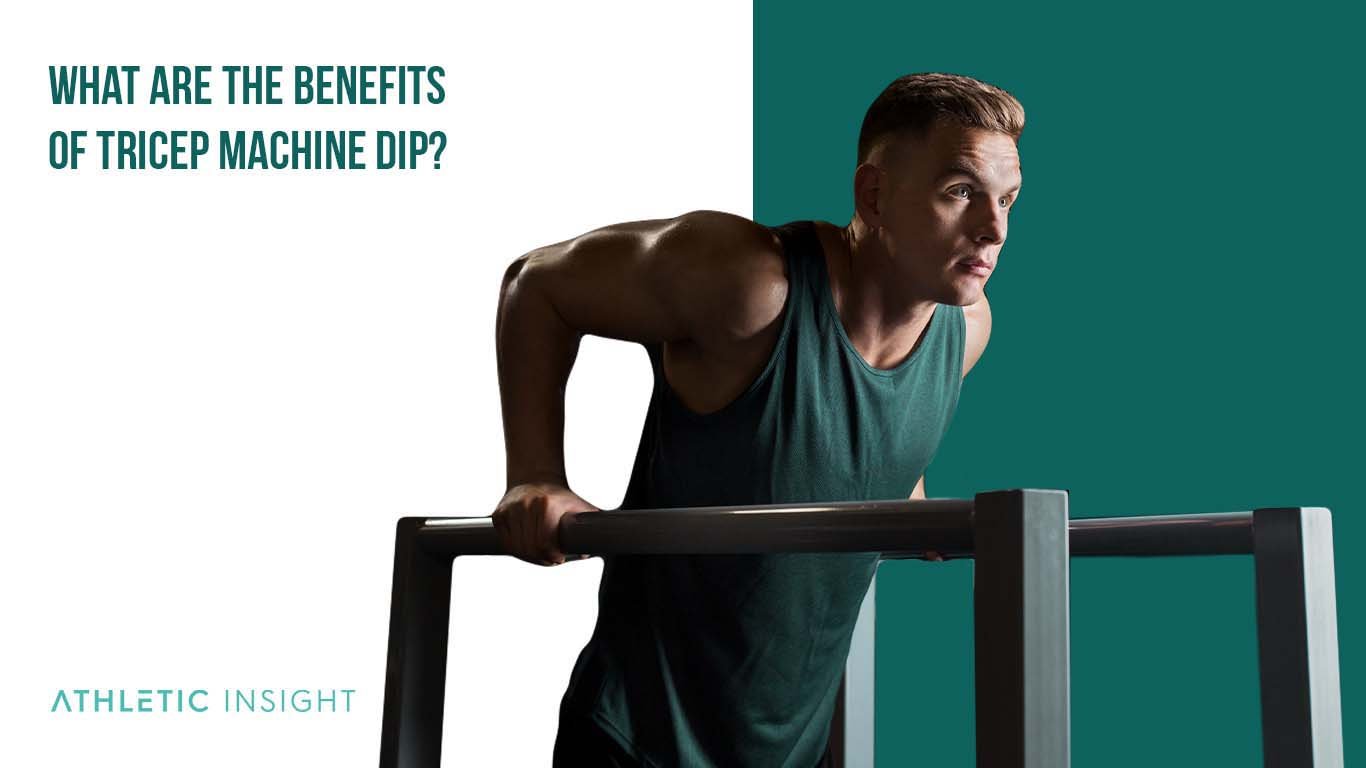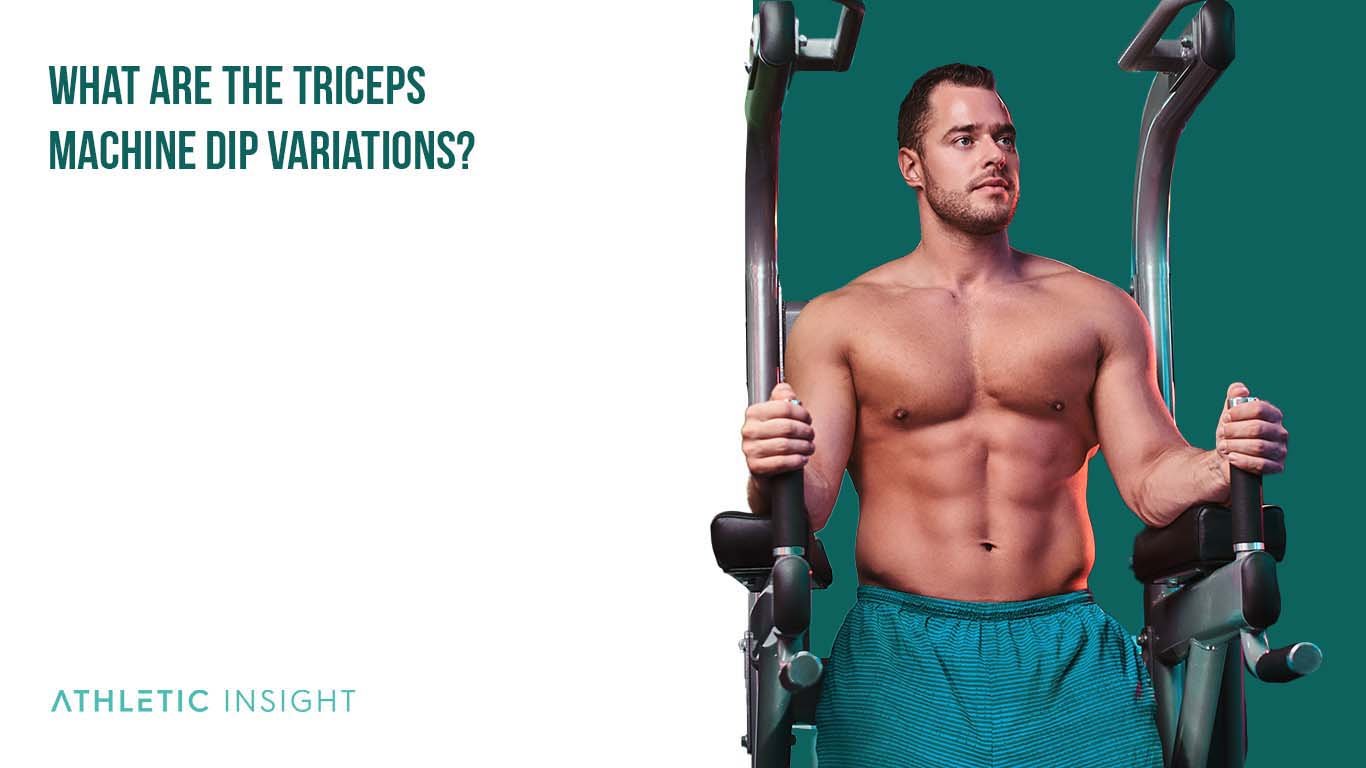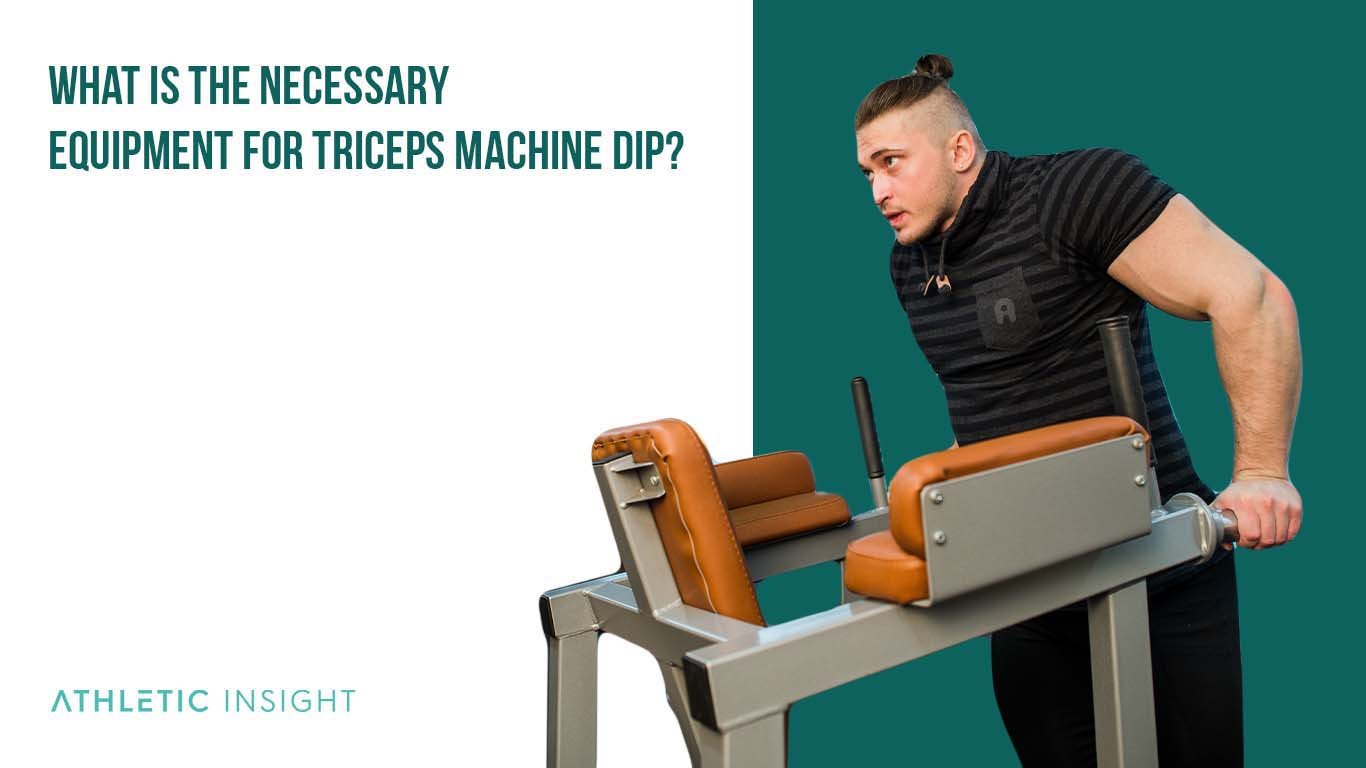The triceps machine dip is a tricep exercise that uses machine weights instead of bodyweight to form muscle. Unlike a bench or freestyle dip, machine dips support better form and help prevent injury. They will also encourage muscle growth as it is easier to add more weight.
Machine dips use the triceps, deltoids, pectorals, as well as some smaller back and side muscles. The proper form requires a straight posture, elbows tucked close to the body, and full arm extension to target the triceps. There are two types of tricep machine dips, standing and seated.
Common mistakes of these dips include flaring the elbows, having improper posture, and adding too much weight. These mistakes can lead to injuries like shoulder strain or torn muscles. Proper form can help prevent these injuries from occurring.
How to Perform Triceps Machine Dip with Proper Form?
When using a tricep dip machine, you must keep a straight back at all times. You must also keep your elbows close to your sides, so they don’t flare. Extending your arms will work your entire triceps for better definition. If done correctly, Triceps Machine Dip is an effective workout to include in your tricep exercise routine.
- Straight back
- Elbows close to the body
- Extend your arms
The proper form will ensure you strengthen your triceps instead of your chest and also prevent the possibility of injuring your shoulders.
What are the Benefits of Triceps Machine Dip?
Using a seated dip machine can help you for many reasons.

- Strengthen the Tricep Muscles
- Strengthen the Deltoid Muscles of the Shoulders
- Strengthen the Upper Pectoral Muscles
- Work with Heavier Weights
- Triceps Brachii Aesthetic
These five benefits work to improve your overall strength and stability so you can lift heavier weights.
1. Strengthen the Tricep Muscles
A machine dip will primarily strengthen your tricep muscles. When your triceps grow stronger, they can handle more weight for this exercise. They can also help you lift heavier weights for other exercises that use your shoulders and arms.
2. Strengthen the Deltoid Muscles of the Shoulders
A seated dips machine, in particular, can help you strengthen your deltoids. Deltoids give your shoulder strength and stability, so when they grow stronger, they will also help your shoulder joint to grow strong.
3. Strengthen the Upper Pectoral Muscles
A tricep dip machine will strengthen your upper pectoral, which performs the opposite function of a shoulder deltoid. With increased pectoral strength, you will get a more balanced shoulder joint, so you can lift more without risk of injury.
4. Helps to Work with Heavier Weights
As mentioned above, the increased strength of your triceps, deltoids, and pectorals will give you a stronger shoulder. You will be able to work with heavier weights without worrying about shoulder injuries.
5. Benefits of the Aesthetic of the Triceps Brachii
This exercise will also help your triceps brachii to stand out, giving you better muscle definition and helping you look strong.
What are the Mistakes for Triceps Machine Dip Form?
A dip machine vs. dips freestyle can help prevent mistakes in your form. The top triceps machine dip mistakes you can make on a machine are as follows.
- Not having a straight posture
- Flaring your elbows
- Not extending your triceps fully
How to Determine Proper Weight for Triceps Machine Dip?
When comparing dip machine muscles worked to freestyle dip muscles, you’ll find the machine version uses fewer–because of this, using a machine will help you lift more weight. A freestyle dip requires you to lift your own body weight, so a machine will allow you to lift a little more.
The rule of thumb is to set the machine to your weight, plus another 20 percent. So, if you weigh 100 pounds, you can start out lifting 120 pounds of weight.
Which Muscles are Involved While Performing Triceps Machine Dip?
Even with seated dips, you use a grouping of muscles with each movement. A triceps machine dip uses the following muscles.
- Triceps
- Deltoids
- Pectorals
- Trapezius
- Rhomboids
Tricep dips work all of these muscles for better definition and strength around the arm and shoulder joint.
How to Do a Triceps Machine Dip?
The following is the best way to execute a safe triceps machine dip. If the movement doesn’t feel right, or if you are experiencing pain, then you may want to check back on this list.
- Hold the machine’s handles
- How far can you go without help?
- How far can you go without arching your back?
- Bend your arms, then straighten
- Reposition the pin to the weight plate
- Do eight to ten repetitions
- Keep tight core muscles
- Rest for 60 seconds
1. Straighten your elbows and hold the machine’s handles.
Getting a good grip on your machine is crucial: it will provide you with the correct movement and reduce the risk of injury.
2. Determine how far you can go without help.
If you struggle with dips, you might want to consider an assisted dip machine.
3. Determine how far you can go without arching your back.
Most triceps machines will have a backrest to help you keep your back straight. If yours does not, be wary of how it will affect your posture.
4. Bend your arms 90 degrees and then straighten them.
This “preliminary” dip will help you warm up your triceps and help you gauge how much weight you can handle.
5. Reposition the pin to the weight plate you believe you require and try again.
Begin with a lower weight to avoid straining your shoulders or triceps.
6. Initially, do eight to ten repetitions.
Eight to ten repetitions are the standard for a set. If you cannot do this number, you are not strong enough for weighted dips.
7. Keep your core muscles tight.
Keeping your core tight will help stabilize you and make the dips easier.
8. Rest for 60 seconds before beginning the next set, then the set after that.
Resting between your sets will allow you ample recovery time so you can go again.
What are the Triceps Machine Dip Variations?
There are two Triceps Machine Dip variations: standing triceps dips variations and seated triceps dips variations. The standing variation will have a platform for your feet or knees. The seated variation has a seat with a backrest. The seated version often has a seatbelt to help keep you in your seat if you are struggling with a heavyweight.

What is the Necessary Equipment for Triceps Machine Dip?
A best triceps machine dip requires a weighted dip machine. These machines have the following components.

- Weighted plates
- Seats or foot/knee rests
- Moveable arms
- Sometimes seatbelts
What are the Triceps Machine Dip Related Facts?
Below are some popular questions people ask about triceps machine dips.
Does Triceps Machine Dip Affect the Hormones?
As an exercise, triceps machine dips will affect your hormones in much the same way any regular exercise will. However, they alone will not drastically alter your hormones, so you may not notice an effect.
Is Triceps Machine Dip Practiced Within Crossfit?
Yes, Crossfit will practice the triceps machine dip.
Does Triceps Machine Dip Improve Three-Head of Triceps?
Yes, the triceps machine dip will improve the strength and definition of the triceps’ three-head.
Is Triceps Machine Dip Dangerous?
If done incorrectly, the triceps machine dip can put a lot of strain on your shoulders and potentially cause you an injury.
Is Triceps Machine Dip Essential?
Triceps machine dips are not essential as there are alternative exercises. However, they do provide strength to the triceps and help encourage stable shoulders.
What Can Replace Triceps Machine Dip?
If you don’t have a machine, you can do triceps dips on a bench. You can also do various exercises to work the same muscles. These include;
- Diamond pushups
- Cable chest flys
- Close grip bench press
What is the difference between Triceps Machine Dip and Bench Dip?
The difference between a triceps machine dip and a bench dip is the equipment used. While both exercises work the triceps, the machine dip is done with a special machine that is geared towards those without the upper body strength to complete the repetition without assistance.
A bench dip is a tricep exercise where you place both hands on a bench and slowly descend with your feet straight out in front of you. It is similar to an incline pushup, but facing the opposite direction.



